The Jasminer series of ASIC miners for Ethash and ETChash by the Chinese company SUNLUNE have been quite big (and expensive) when they were announced near the end of last year. They were the most efficient Ethereum ASIC miners out there at the time and with the high mining profitability of ETH at the time there was interest and demand even being quite expensive miners. Now, with the end of Ethereum’s mining phase and the low profitability of mining for pretty much everything the Jasminer ASIC miners are easier to get a hold of and you may get a decent deal for the price of one. The big question however is should you invest in a Jasminer X4 ASIC miner now and that is precisely what we are going to talk about here.
We’ve managed to score a decent deal for about $2000 USD on a Jasminer X4 1U-C ASIC miner as we were trying to get our hands on one of these for a while now to play around with it and see what the hype is all about and share our first-hand experience from the device. So, below you will find some of the things we have noticed playing for a few days with the device as well as some useful tips and tricks that might help any of you that might already have an X4 miner or are maybe planning to buy one. One of the first thing we love to do is to open up the hardware and explore what we have inside and how we can improve it further or optimize it, then play around with the software as well to see what else may be lingering in there too. But we will get to that in a bit, for now let us just share our first hands on experience with the device…
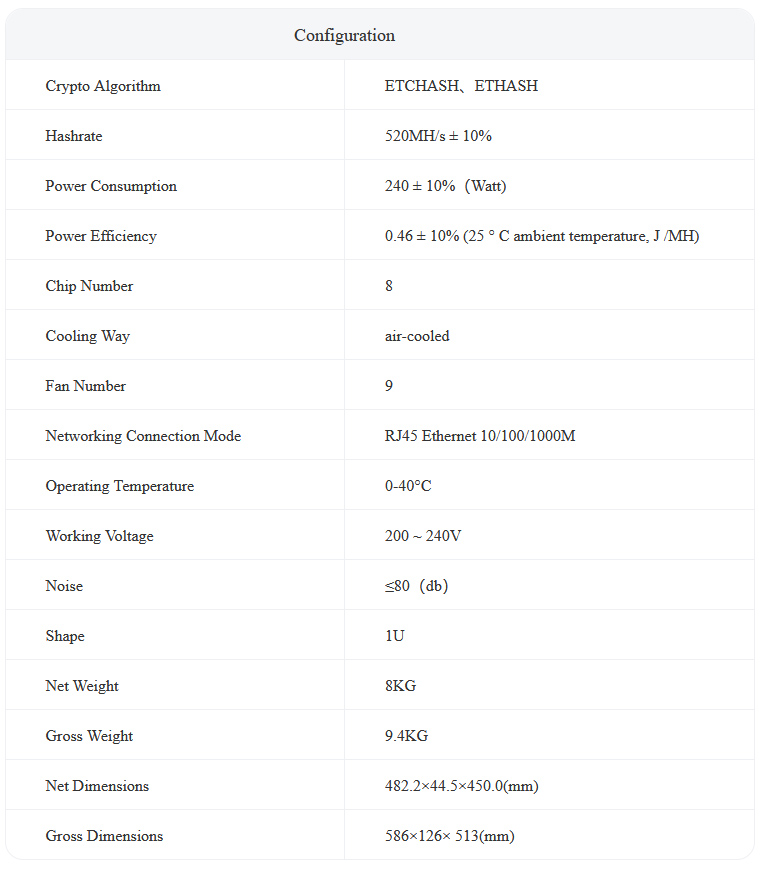
Jasminer X4 1U is rated at 520 MH/s with a power usage of 240 Watts (with 10% variation according to the specs) with a power efficiency of 0.46 J per Megahash or hashrate. The device is equipped with 8x Jasminer X4 ASIC chips in a 45×45 mm size (678 square millimetres die size) with 1TB memory bandwidth, 5GB of memory and a hashrate per chip of 65 MH/s. Each of the chips has 384 computing cores and 384 on-chip dies according to the manufacturer with a 512-bit bus width and an operating frequency of 800 to 1 GHz and a power consumption of 23 Watts. The 8 ASIC chips are placed on a single board with a controller in the middle and there is also a separate controller board, a power supply and a number of fans inside the case.
The Jasminer X4 1U-C that we got is pretty much the same as the Jasminer X4 1U model, however it is rated to 450 MH/s with 240 Watts of power usage instead of 520 MH/s with the same power consumption. We are not entirely sure if there is actually a hardware difference between the two units or it is more a matter of software and more specifically the clock rate of the chips 200 MHz clock for the X4 1U-C and 225 MHz clock for the X4 1U and this is something you can control from the miner configuration (the 800 MHz to 1GHz specs of the chip). Shouldn’t this however mean that these chips should be able to run at 250 MHz as well then, well, it does, but you are not allowed to do it by default, though you can read how to do it yourself below.
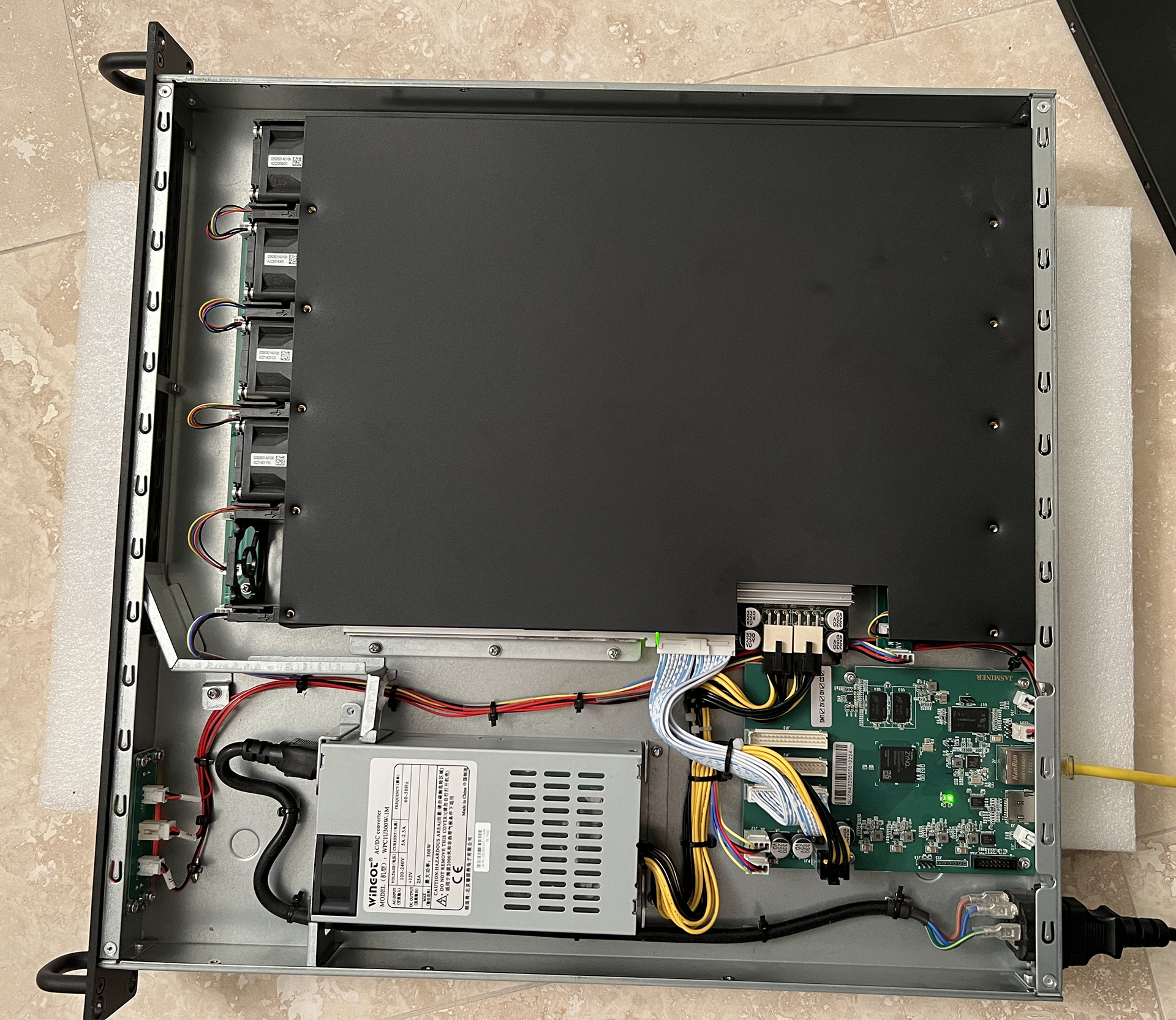
The mining device comes in a standard 1U server case, so it is easy to deploy in a rack and be used in a target="_blank" rel="noopener">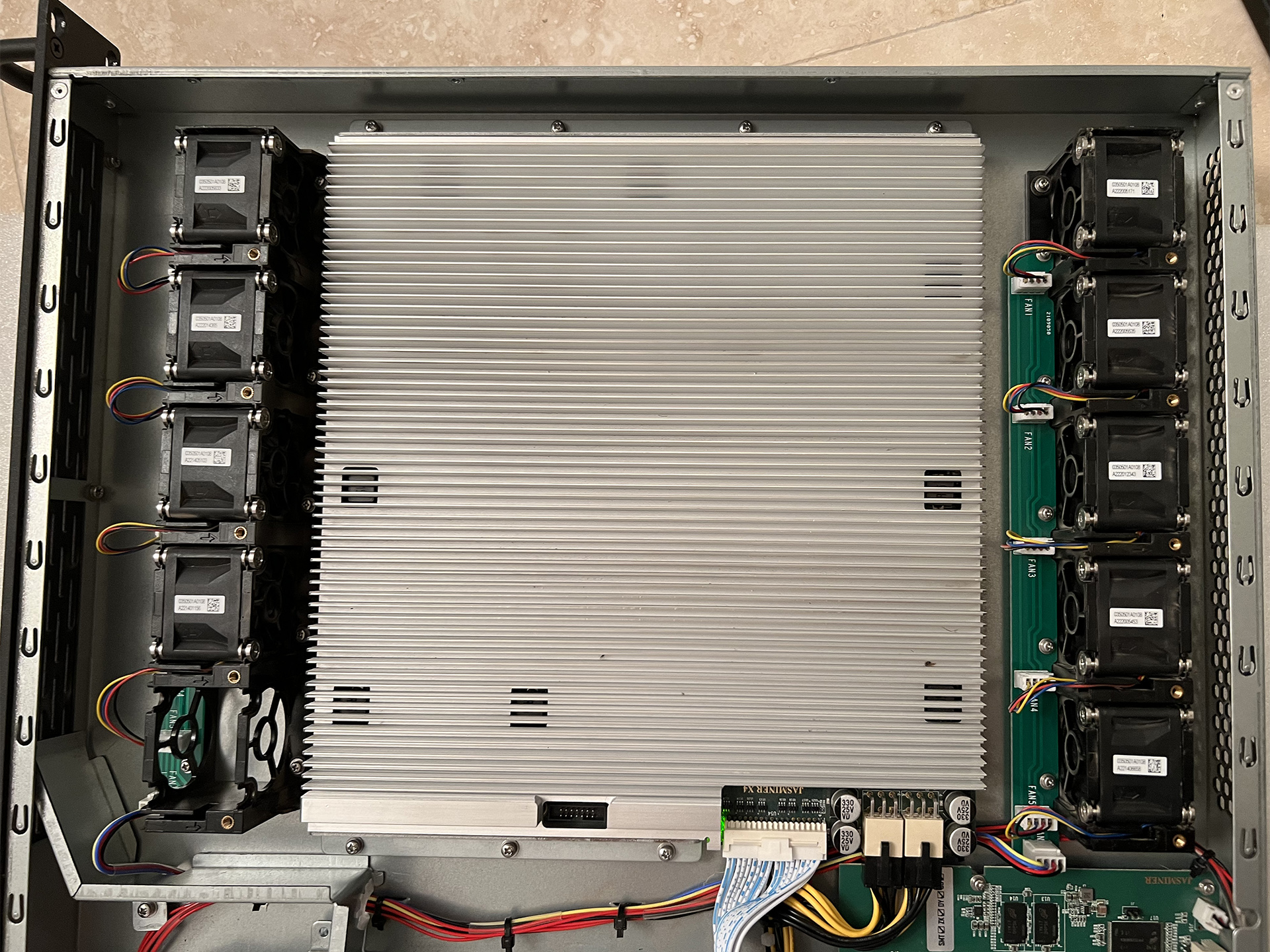
Inside the 1U miner case there are 9 small server AVC fans that are typically very noisy due to the high RPM that they operate at. The particular model is AVC DBTB0428B2U, with a size of 40x40x28mm, dual ball-bearing and rated at 12V 0.48A (5.76W at maximum speed of rotation). They are PWM controllable 4 wire fans and although they start with low RPM and not that much of a noise, as soon as hashing starts they up their rotation a lot and become very noisy and power hungry… at max RPM these could get up to almost 52W of power usage just for the fans. Modifying the miner with fewer larger fans can make it not only more power efficient, but almost silent in terms of operation.
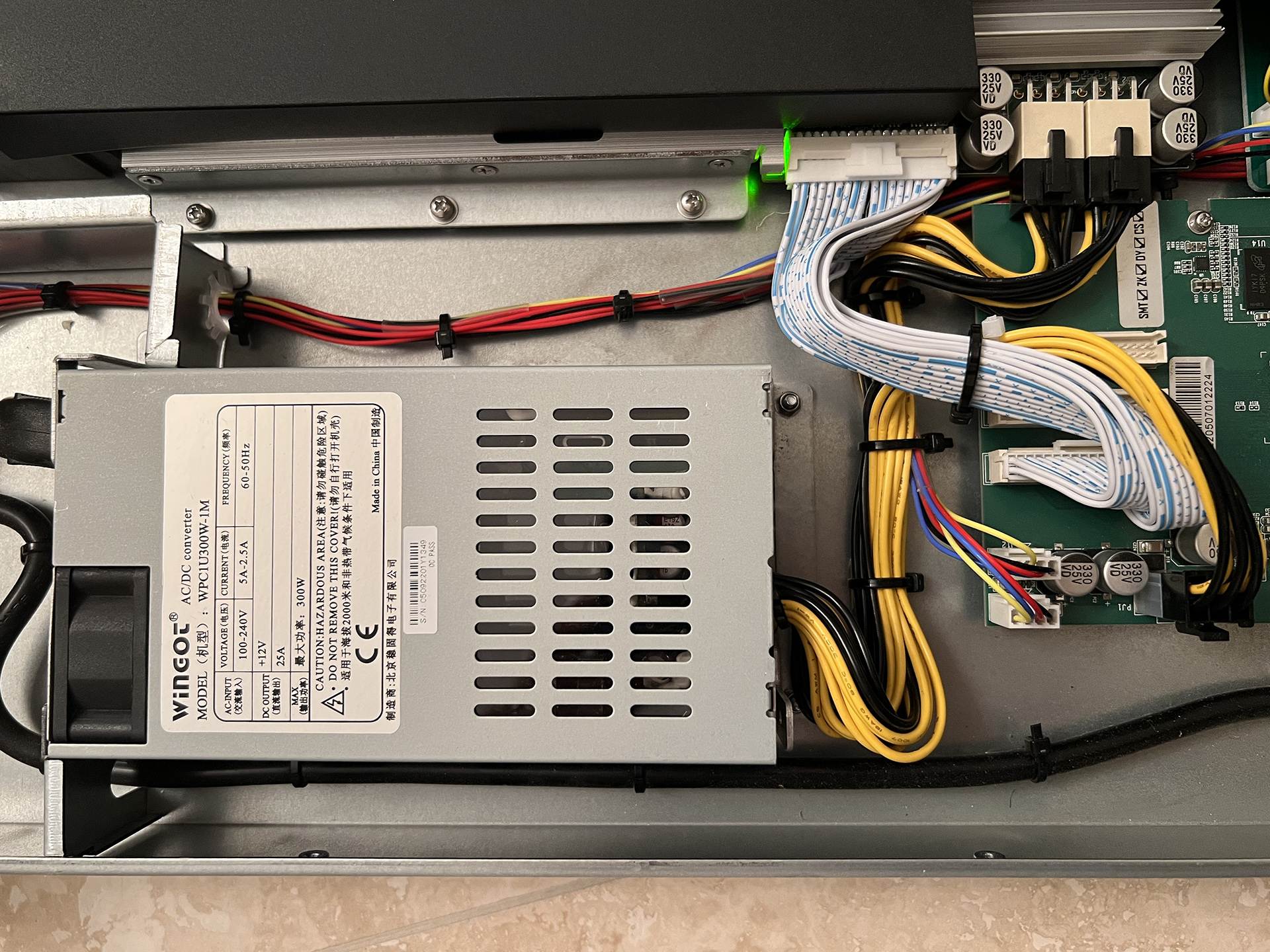
Even if you stop and replace the 9 cooling fans for the ASIC chips there is one more thing you need to take action on. The power supply is also a server type one and even though it is wated at just 300 Watts it does come with yet another small and noisy fan that although not as loud as the others still makes the miner noisy when operating. You have the option to either replace the standard PSU with a silent one (you only need 3x 12V 6-pin PCI-E power connectors to power everything) or disconnect the small PSU fan and replace it with a larger silent one.
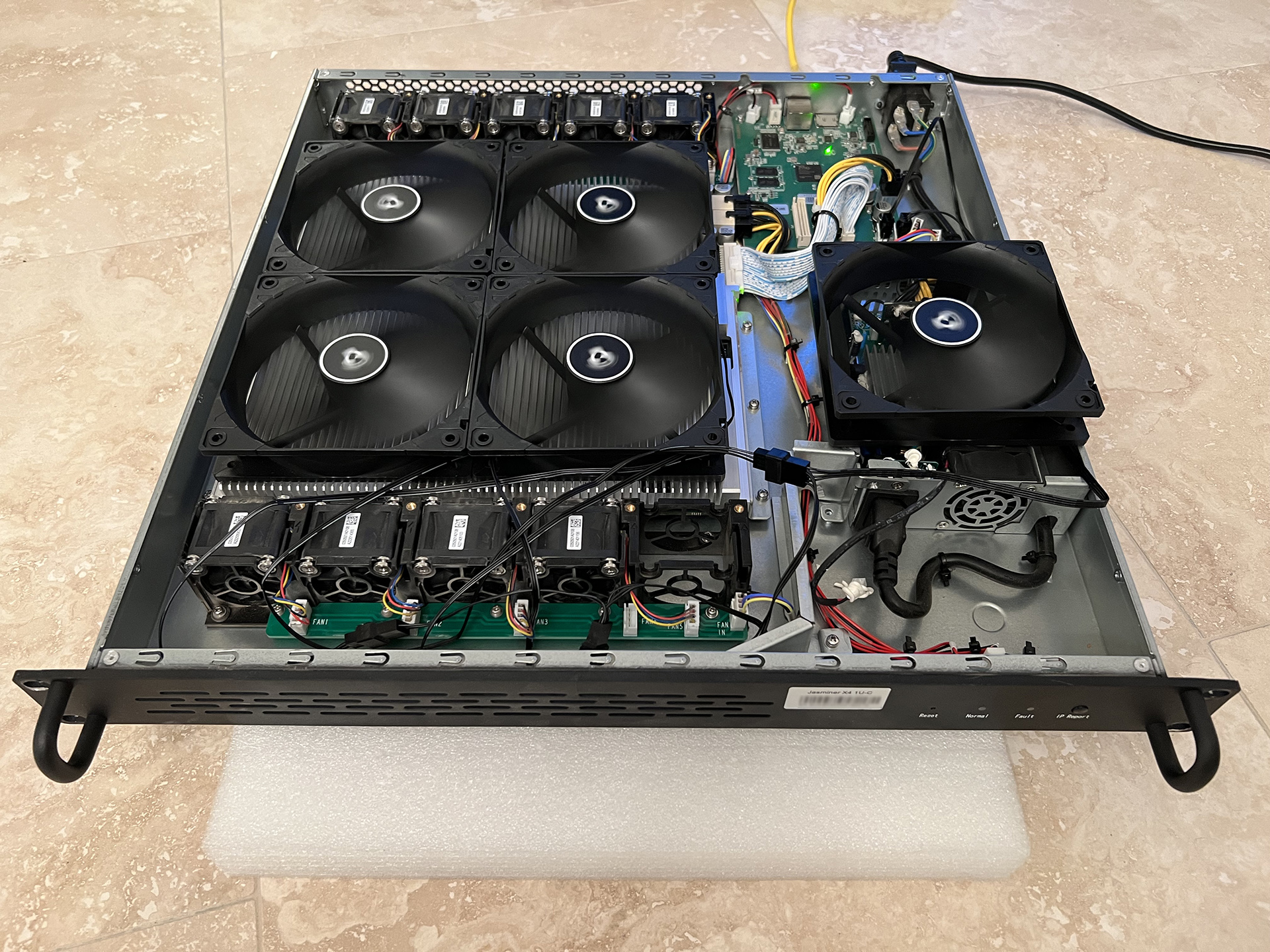
One of the first things we did with the device was to make it silent, meaning that we disconnected all of the 10 noisy server-type fans and have replaced them with 5x Arctic Cooling F12 120mm fans (rated at 12V 0.21A), making the Jasminer X4 1U-C run pretty much silent. The main Jasminer control board has 2x 4-pin fan sockets that you can utilize (each of them has a splitter board connected for the small server fans). So, you can have 4 fans on the main heatsink where the ASIC chips are connected via a 4-fan splitter cable to the first socket and a single fifth fan connected to the second socket. You need to either have fans connected or a fan simulator as if no RPM is being reported an alarm will trigger. You’ll need to open the power supply and disconnect its fan from the PSU main board (there might be some glue on top of the connector to hold it in place), or just use a different silent PSU altogether.
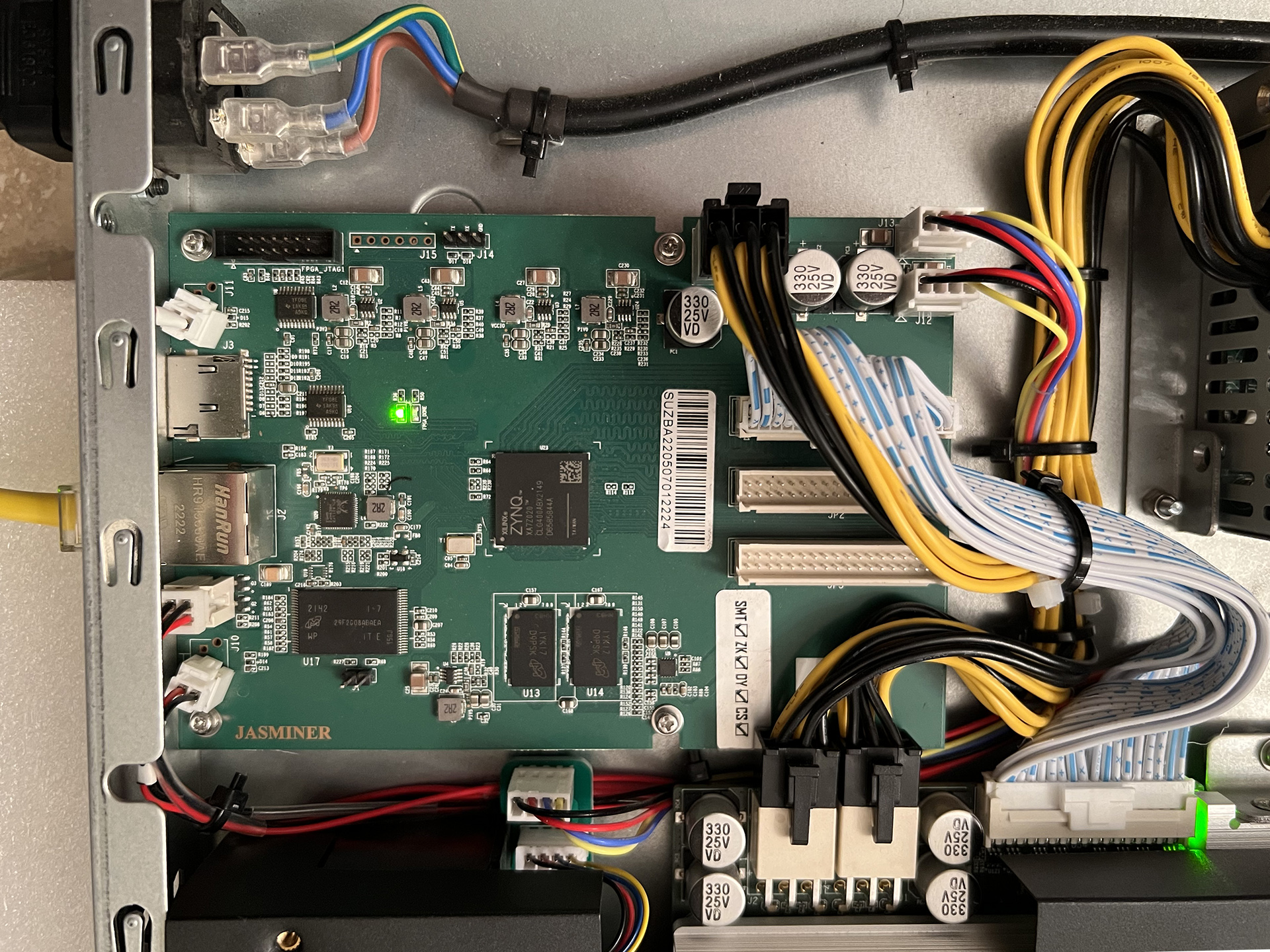
It is interesting to note that the main control board of the miner has three sockets for ASIC miner boards to be connected and just one is being used in the X4 1U miner, but the other two slots are fully functional, so if you add a second and a third ASIC board they should be active as well making the miner 1040 MH/s (Jasminer X4-Q anyone?) or 1560 MH/s respectively. The most powerful model with 2500 MH/s Ethash ASIC hashrate – Jasminer X4 High throughput server that the company sells is probably equipped with a different control board with 5x 8-chip ASIC boards. So, if you have multiple X4 1U units you may play around and turn them into fewer miners with up to 3 computing boards per control board and more powerful 800 or 1000W power supply.
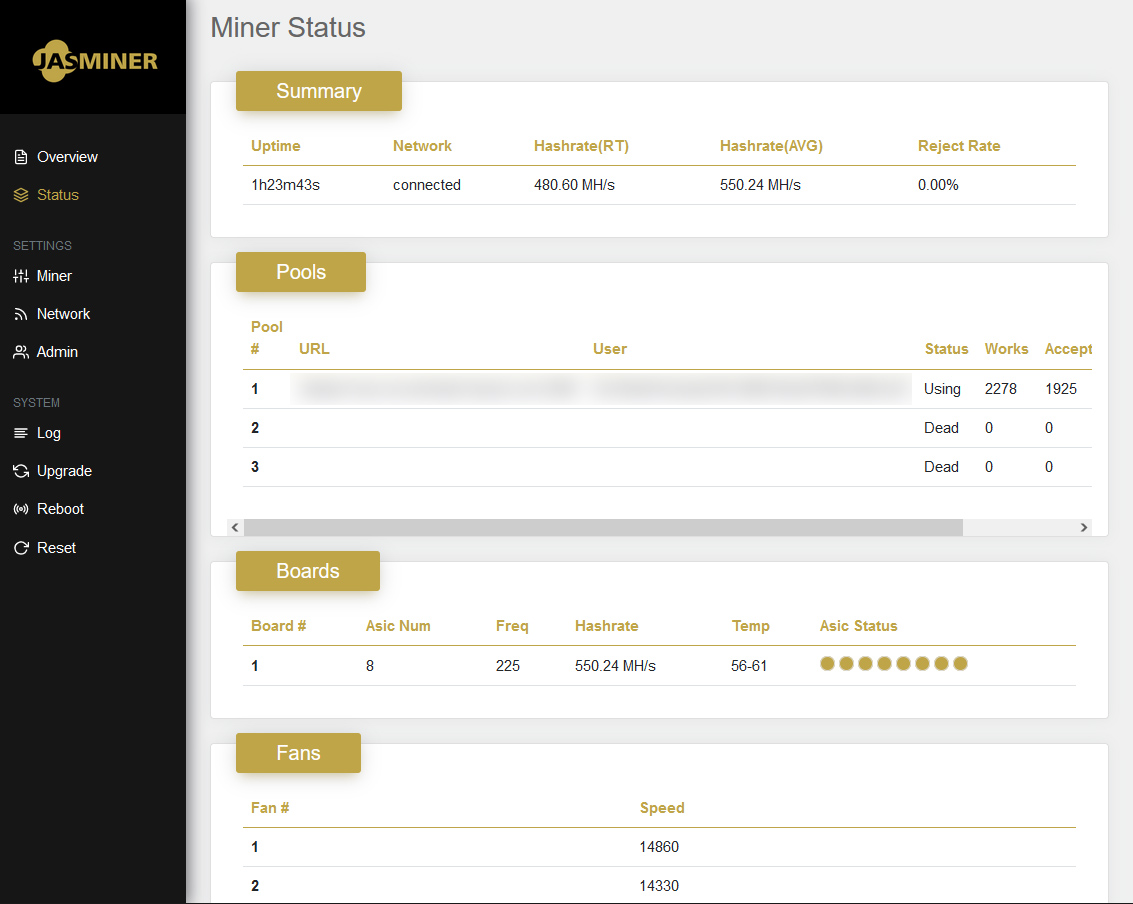
So, let us get to mining performance and power usage that we have measured. First is stock settings where we are using the default hardware configuration of the device (just as it came) running at a clock frequency of 225 MHz and then the same settings with our silent modification described above.
Default
– 225 MHz clock
– 297 Watts of power usage
– 55-61 C ASIC temperature
– 530-560 MH/s hashrate average
– 76 Decibels noise level (dBA)
Silent Mod
– 225 MHz clock
– 265 Watts of power usage
– 53-56 C ASIC temperature
– 530-560 MH/s hashrate average
– 44 Decibels noise level (dBA)
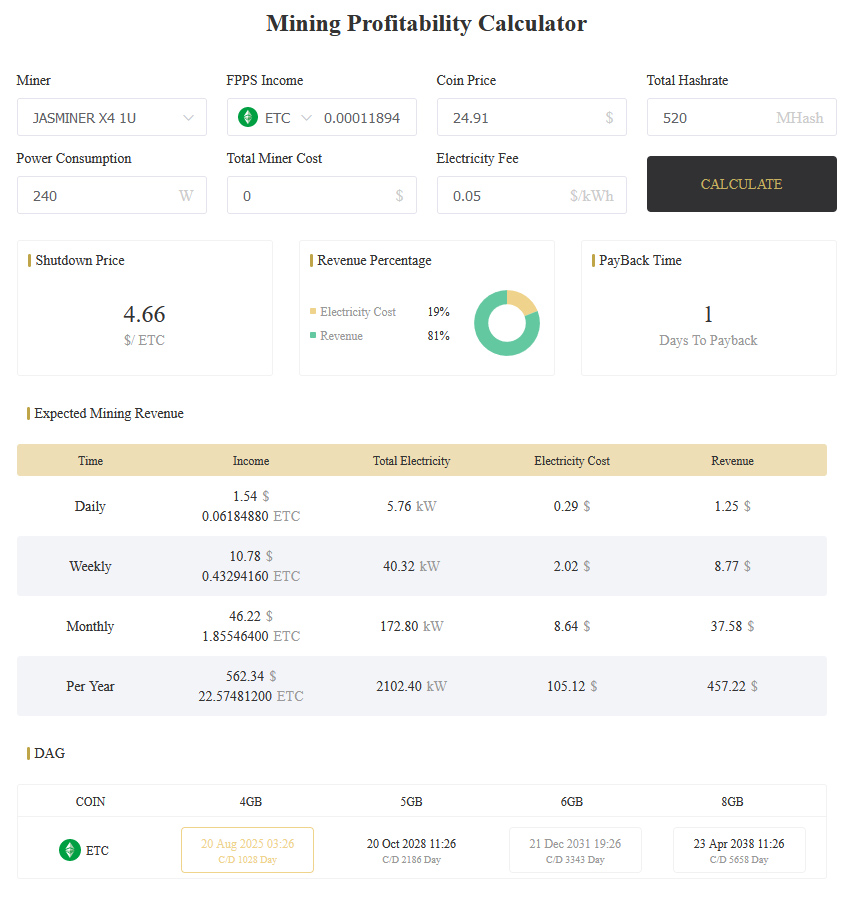
The official mining profitability calculator on Jasminer’s website reports around $1.25 USD daily profit for the Jasminer X4 1U device mining ETC at the moment, but that is with power cost of just $0.05 USD per kWh and most of you are probably paying at least multiple times that price. With an average price of around 25 cents per kilowatt hour of electricity you are just about to be able to pay for the electricity used by the miner at the moment. The above calculation is made using just Ethereum Classic (ETC) mining and no dual-mining or Nicehash with ETChash mining that are likely to be more profitable at the moment with 30-40% higher earnings on average.
Unfortunately with the Jasminer X4 for now at least there is no option to dual-mine ETC + ZIL on a mining pool like Ezil.me due to the way the miner works (it splits the pool ID at the first dot threating the remaining data as a worker ID, so you cannot have two wallets in it for ETC and ZIL). It is not only a problem with the Ezil.me mining pool, the other bigger ZIL dual mining option K1Pool uses a single ID for pool username, so you can connect the Jasminer X4 to it and it will mine ETC, but when it needs to switch to ZIL mining the miner will simply idle for a while and then continue with ETC mining when it is resumed. So, dual-mining ETC+ZIL is not working for the moment with the latest official firmware for the Jasminer X4.
The alternative higher paying option is ETCHash mining on Nicehash that reports higher profitability probably due to people using it for buying hashrate to double mine ETC+ZIL. Now, we know that miner has trouble with direct dual-mining, but it also has another issue – it is currently not compatible with Nicehash at all. The miner reports any of the Nicehash DaggerHashimoto and ETChash pools as dead and does not connect to them at all and we have confirmed with the manufacturer that Jasminer X4 currently does not have Nicehash support. So, unfortunately not much you can do here to get some extra mining profit for now with dual-mining ETC+ZIL or NiceHash mining, the main competitor iPollo has apparently released an updated firmware for their ASIC devices that supports dual-mining, though we have not personally confirmed.
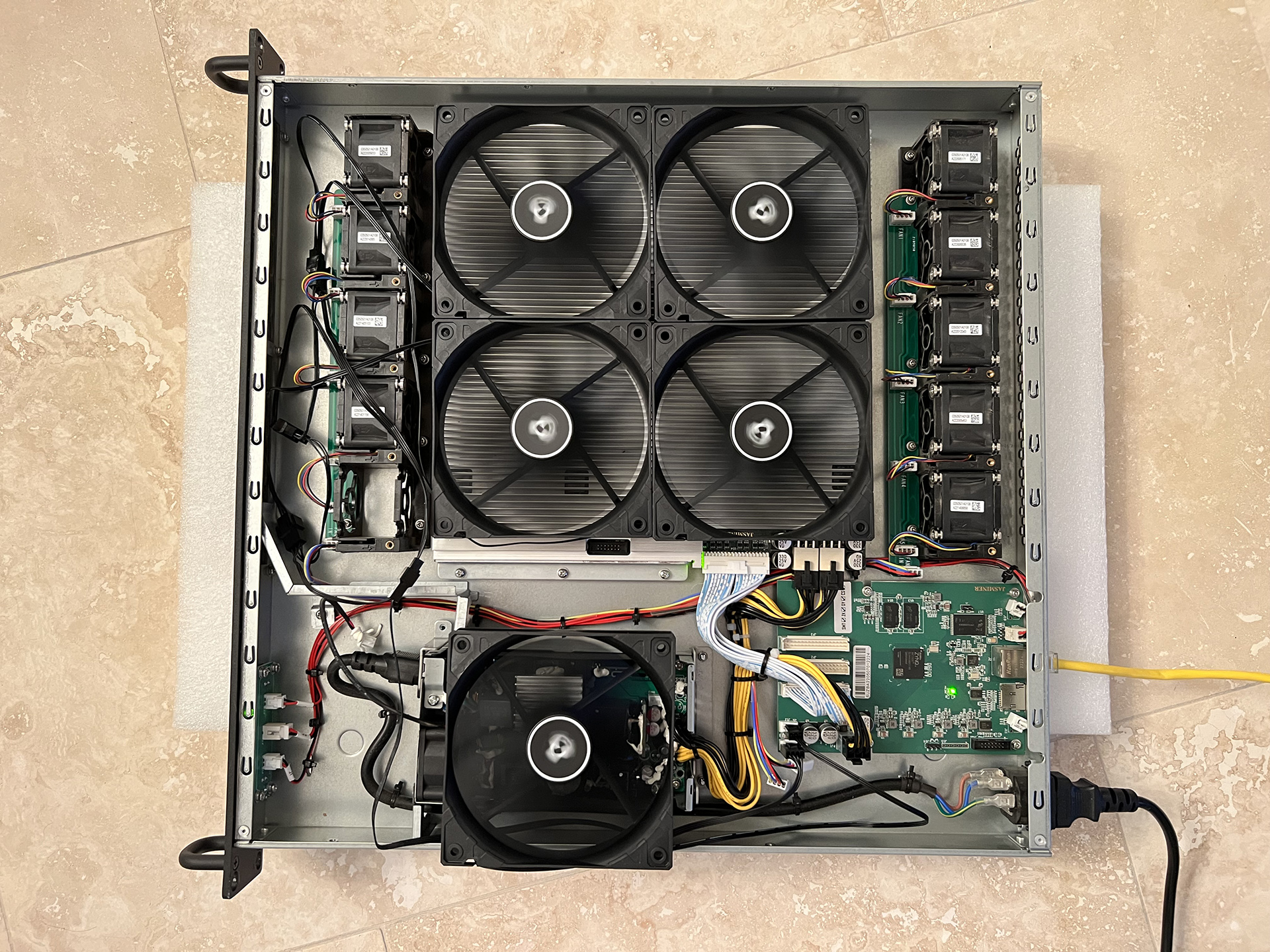
So, what is the conclusion that we can come up based on our first impressions from playing around with the Jasminer X4 1U ASIC Miner. We can clearly say that the Jasminer X4 1U ASIC miner is a nice piece of hardware that is built well. The hashrate and power efficiency are really good and with something profitable to mine it is really a nice ASIC miner for Ethash and Etchash to have handy to mine. The Jasminer X4 1U device is intended for use in>it is not a good idea to use it as a home heater (unless you make it silent, but still with less than 300W of power usage not much of usable heat generated for the winter).
If you have some further questions about the Jasminer X4 1U ASIC miner feel free to ask and if we can we are going to try and help.
 cryptomining-blog.com
cryptomining-blog.com